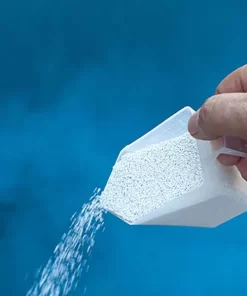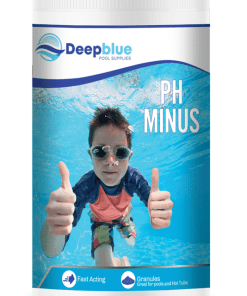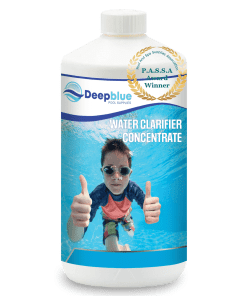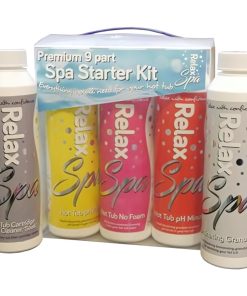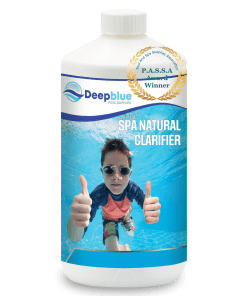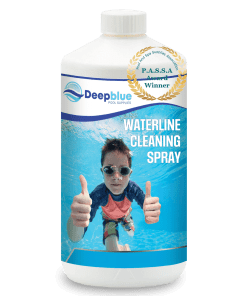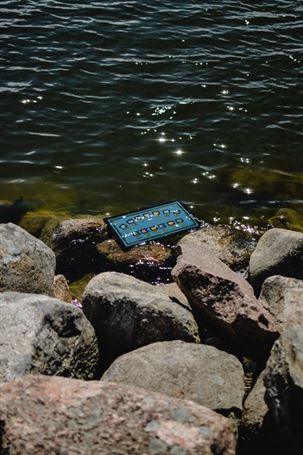Our Top Products
Fast delivery
Algicides Clarifiers and Cleaners
Best Online Sellers
Best Online Sellers
Best Online Sellers
Algicides Clarifiers and Cleaners
Algicides Clarifiers and Cleaners
Algicides Clarifiers and Cleaners
Deep Blue Pro 500ml Spa Instant Cartridge Filter Cleaner (Spray)
Algicides Clarifiers and Cleaners
Deep Blue Pro 500ml Spa Vinyl Cover Cleaner and Preserver Spray
Fast delivery
Best Online Sellers
Algicides Clarifiers and Cleaners
Our Top Brands





What chemicals do I need to start up my pool or hot tub?
To get started, you’ll need a sanitiser (chlorine or bromine), pH increaser and reducer, alkalinity balancer, and a shock treatment. These ensure the water stays clean, safe, and balanced. For hot tubs, you may also want a foam reducer and clarifier. Always test your water to ensure the pH is in the correct range to ensure the chemicals are effective in your water. Before adding any chemicals follow the manufacturer’s instructions for dosing amounts and application instructions.
What’s the difference between chlorine and bromine?
Chlorine is a fast-acting sanitiser, ideal for outdoor pools. Bromine is more stable in hot water, making it perfect for hot tubs. It’s also gentler on skin and eyes. While bromine works slower, it lasts longer and is effective across a wider pH range. However, it can be more expensive than chlorine. Choose based on your water temperature, usage, and personal preferences.
How often should I test my pool or hot tub water?
For pools, test the water 2–3 times a week. For hot tubs, aim for daily or every other day. Regular testing helps you maintain balanced water, ensuring it’s safe and clean. Use test strips or a digital tester to check pH, sanitiser levels, alkalinity, and more. Adjust your chemical levels as needed to keep everything within the ideal range.
How do I raise or lower pH levels in my pool or hot tub?
To raise pH, use a pH increaser (usually sodium carbonate). To lower it, use a pH reducer (sodium bisulfate or hydrochloric acid). The ideal pH range is 7.2 to 7.6. Outside this range, water can become corrosive or scale-forming, and sanitiser effectiveness drops. Always test your water first and add chemicals gradually to avoid sudden swings.
Why is my pool or hot tub water cloudy even after adding chemicals?
Cloudy water can result from imbalanced pH, low sanitiser levels, dirty filters, or fine debris. Even if you’ve added chemicals, poor circulation or old filter media can keep the water cloudy. Check chemical levels, clean or backwash your filter, and consider a shock treatment or water clarifier. Regular maintenance helps prevent recurring cloudiness and keeps water sparkling clear.
What is ‘shock treatment’ and how often should I do it?
Shock treatment involves adding a large dose of chlorine or non-chlorine shock to break down organic waste, kill bacteria, and remove odours. It’s recommended to shock your pool once a week or after heavy use, and hot tubs weekly or after multiple users. Always test water before and after shocking, and let the sanitiser levels return to normal before swimming or soaking.
Are pool and hot tub chemicals safe for children and pets?
Yes—when used and stored properly. Always follow dosing guidelines and allow chemicals to fully circulate before entering the water. Store chemicals out of reach of children and pets, in a cool, dry place. Never mix products or leave containers open. Well-maintained chemical levels actually make the water safer by killing harmful bacteria and preventing skin or eye irritation.
What causes foam in my hot tub and how do I get rid of it?
Foam is usually caused by soaps, shampoos, lotions, or detergents carried into the water by users. Regular water changes, rinsing before entry, and not washing swimsuits in detergent can help. To quickly remove foam, use a foam reducer. However, prevention is best—keep your water balanced, use a non-chlorine shock weekly, and maintain your filtration system.






